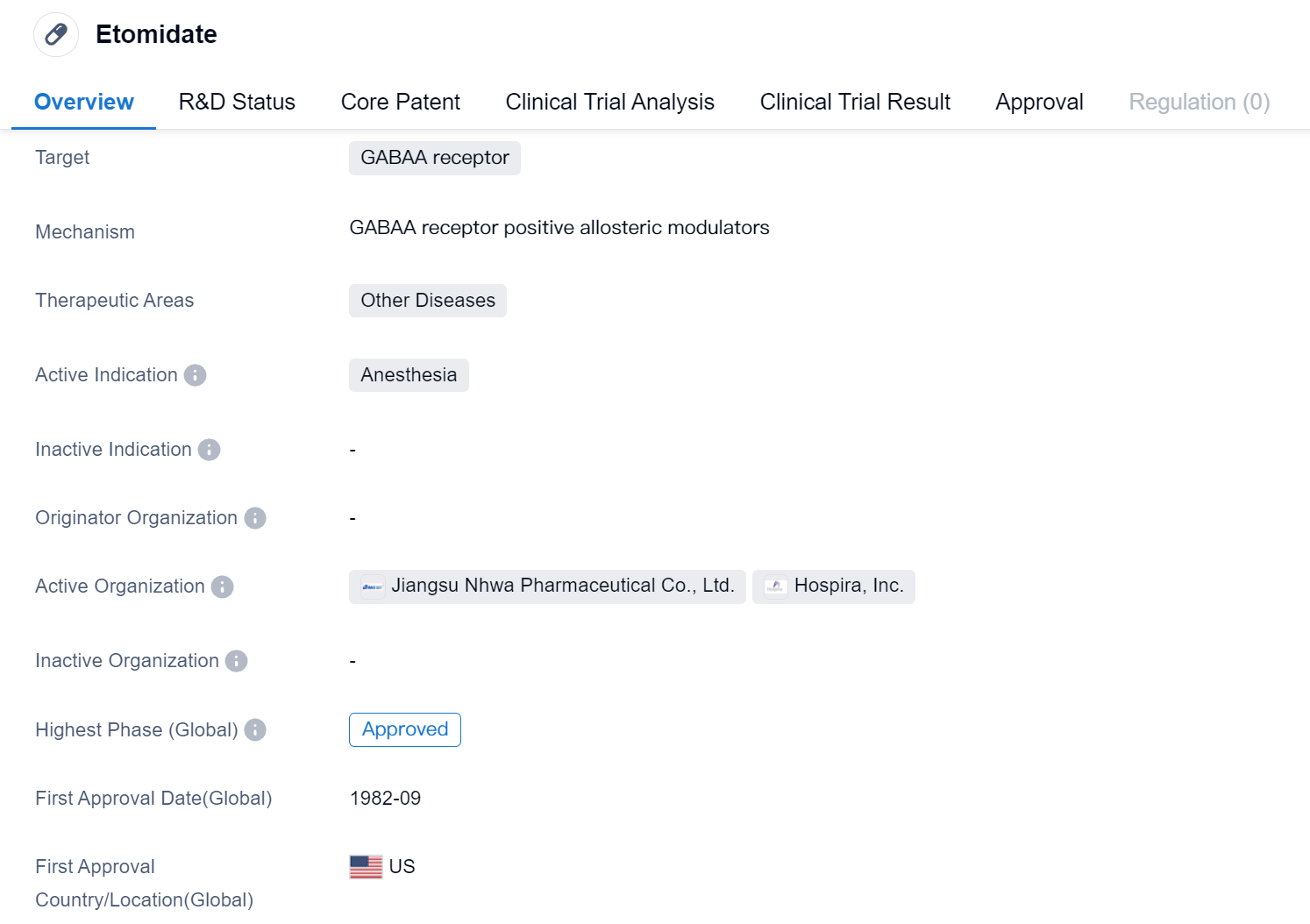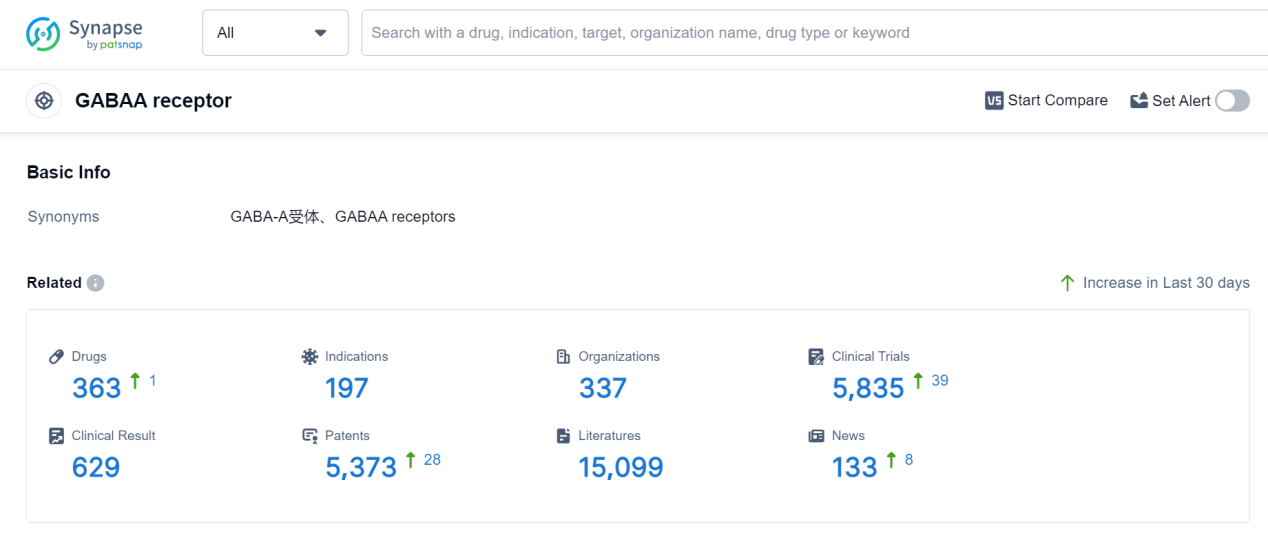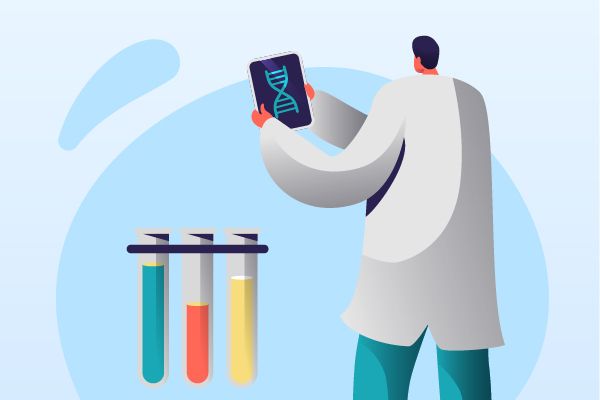Exploring Etomidate's Revolutionary R&D Successes and its Mechanism of Action on Drug Target
Etomidate's R&D Progress
Etomidate is a small molecule drug that acts as an anesthetic by targeting the GABAA receptor. It was first approved for use in the United States in September 1982 and has since gained approval in other countries, including China.
Etomidate is primarily used as an anesthesia agent, indicating its effectiveness in inducing and maintaining a state of unconsciousness during surgical procedures. It is commonly administered intravenously and has a rapid onset of action, making it suitable for use in emergency situations.
As a small molecule drug, etomidate is able to penetrate cell membranes and interact with its target receptor, the GABAA receptor. By binding to this receptor, etomidate enhances the inhibitory effects of the neurotransmitter gamma-aminobutyric acid (GABA), leading to the suppression of neuronal activity and the induction of anesthesia.
While etomidate is primarily used as an anesthetic, it is worth noting that its therapeutic areas are classified as "Other Diseases." This suggests that etomidate may have potential applications beyond anesthesia, although further research and clinical trials would be needed to explore these possibilities.
In terms of its development, etomidate has reached the highest phase of development which is approved globally, indicating its widespread acceptance and recognition as a safe and effective treatment option.
👇Please click on the image below to directly access the latest data (R&D Status | Core Patent | Clinical Trial | Approval status in Global countries) of this drug.
Mechanism of Action for Etomidate: GABAA receptor positive allosteric modulators
GABAA receptor positive allosteric modulators are a type of drugs that interact with the GABAA receptors in the brain. GABAA receptors are a type of receptor found in the central nervous system and are involved in inhibitory neurotransmission, meaning they help to reduce the activity of neurons.
Positive allosteric modulators (PAMs) are compounds that bind to a specific site on the GABAA receptor, known as the allosteric site, and enhance the activity of the receptor. In the case of GABAA receptor PAMs, these drugs increase the binding of the neurotransmitter gamma-aminobutyric acid (GABA) to the receptor, leading to an enhanced inhibitory effect.
By enhancing the activity of GABAA receptors, positive allosteric modulators can have various therapeutic effects. They are commonly used as sedatives, anxiolytics (anti-anxiety drugs), and anticonvulsants (anti-seizure drugs). These drugs can help to promote relaxation, reduce anxiety, and prevent or control seizures.
It's important to note that GABAA receptor positive allosteric modulators should be used under medical supervision, as they can have side effects and may interact with other medications. Additionally, the specific effects and mechanisms of action can vary depending on the particular drug within this class.
Drug Target R&D Trends for Etomidate
The GABAA receptor is a crucial component of the human body's central nervous system. It is a type of neurotransmitter receptor that binds to the neurotransmitter gamma-aminobutyric acid (GABA). Activation of the GABAA receptor leads to the inhibition of neuronal activity, resulting in a calming and sedative effect. This receptor plays a vital role in regulating anxiety, sleep, muscle relaxation, and the prevention of seizures. Additionally, it is the target of various pharmaceutical drugs, such as benzodiazepines, which enhance the receptor's activity to treat conditions like anxiety disorders, insomnia, and epilepsy. Understanding the role of the GABAA receptor is essential for developing effective medications that modulate its function.
According to Patsnap Synapse, as of 7 Sep 2023, there are a total of 363 GABAA receptor drugs worldwide, from 337 organizations, covering 197 indications, and conducting 5835 clinical trials.
👇Please click on the picture link below for free registration or log in directly if you have a freemium account, you can browse the latest research progress on drugs, indications, organizations, clinical trials, clinical results, and drug patents related to this target
Conclusion
Overall, etomidate is a well-established small molecule drug that has been approved for use as an anesthesia agent since 1982. Its targeting of the GABAA receptor allows for the induction and maintenance of anesthesia, making it a valuable tool in surgical procedures. While its therapeutic areas are classified as "Other Diseases," its primary use remains in the field of anesthesia.






